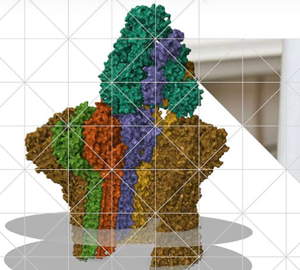
sTCC (sC5b-9) and MAC: The dual nature of complement activation
The Terminal Complement Complex (TCC) and the Membrane Attack Complex (MAC) are, in essence, the same final complement assembly. When tethered to cell membranes, it's referred to as MAC. When suspended in fluid, it’s known as soluble TCC (sTCC or sC5b-9). Research shows fluctuating sTCC levels during infections, autoimmune diseases, and trauma - including traumatic brain injuries - making it a vital marker for complement system activation in immunological studies.
The complement system isn't just a frontline defense against pathogens; it plays a multifaceted role in immune regulation, cellular communication, and disease development. Yet, this cascade is a double-edged sword - protective when controlled, but potentially destructive when overactive. In such cases, it can drive inflammation and tissue damage through the release of inflammatory mediators.
Understanding how sTCC and MAC function within this cascade is essential for deciphering their roles in both health and disease states.
What Is sTCC?
sTCC (soluble Terminal Complement Complex), also called sC5b-9, represents the terminal phase of complement activation - a culmination of all three complement pathways (classical, lectin, and alternative) leading to C3 activation. From there:
C5 is cleaved into C5b, which then binds to C6 and C7, forming a complex that attaches to cell membranes.
Next, C8 integrates and extends structures into the membrane; C9 then polymerises around this structure, forming a pore-shaped complex (C5b-9) that can cause cell lysis.
In the fluid phase, if insertion into membranes fails, sTCC forms instead and binds to regulatory proteins like vitronectin or clusterin. This prevents harmful insertion into cell membranes.
Because membrane-bound TCC remains with cells, it doesn't show up in plasma. However, sTCC does - and antibodies like aE11 can detect both forms, with Hycult Biotech’s TCC ELISA (HK328) specifically measuring the soluble form.
Though the MAC can destroy cells by forming membrane pores, sTCC is considered biologically inert and serves mainly as an indicator of complement activation and incomplete assembly of MAC.
Why reliable measurement of sTCC matters
While sTCC itself doesn’t cause cell death, the membrane-bound MAC can have important effects on nucleated cells, including:
- Stimulating the release of inflammatory mediators
- Influencing cell proliferation
- Serving as a marker of systemic complement activity
Elevated sTCC and MAC levels have been implicated in chronic inflammation and damage seen in conditions such as atypical hemolytic uremic syndrome (aHUS), neurodegenerative diseases (e.g., multiple sclerosis, Alzheimer’s), and more. Thus, identifying and monitoring sTCC offers critical insights into disease progression and potential therapeutic strategies.
How the TCC ELISA, Human Kit by Hycult supports research
The Hycult Biotech TCC ELISA, human kit (HK328) is specifically designed to detect soluble TCC (sC5b-9) in biological samples. This assay provides researchers with a robust and reproducible method to study complement activation in clinical and preclinical settings.
Key benefits include:
- Specificity: Detects only soluble TCC, ensuring accurate measurement of complement activation in fluids such as plasma, serum, urine, cerebrospinal fluid, and cell culture supernatants.
- Sensitivity: Allows detection of both baseline and elevated sTCC levels, making it suitable for monitoring subtle changes in complement activity.
- Reproducibility: A validated 7-point standard curve ensures compliance with FDA/EMA guidelines for biomarker assays.
- Versatility: Applicable to a wide range of research areas including autoimmune disease, neurodegeneration, renal disorders, oncology, and trauma.
- Clinical relevance: By quantifying systemic complement activity, it provides insight into disease mechanisms and can support the evaluation of therapeutic interventions targeting the complement system.
The TCC ELISA kit enables scientists to bridge the gap between laboratory findings and clinical relevance - making it a valuable tool for advancing both biomarker discovery and translational immunology research.
This content was inspired by content produced by Hycult.
